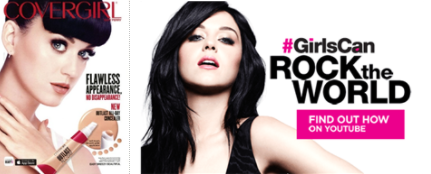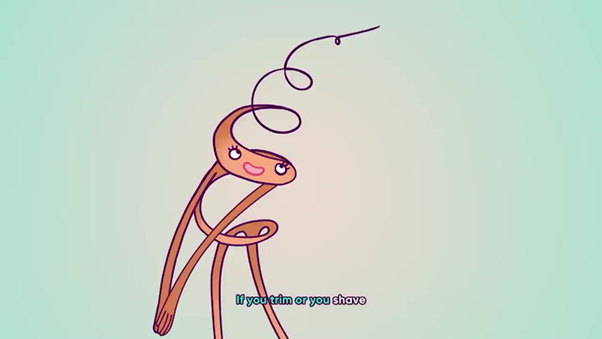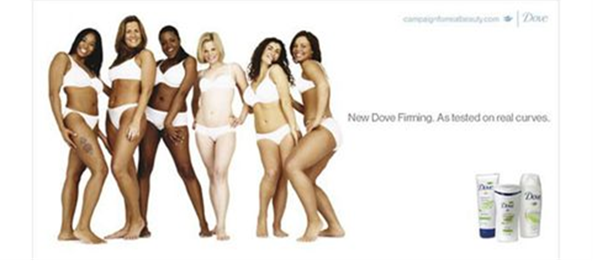Can ads get equal with femvertising?
August 2021
In our last article, Let’s Get Real About Femvertising: A New Way of Fixing Women, we dived into the history of ‘femvertising’. The term was coined to praise ads that challenge gender stereotypes, but as we looked closer at some of the ads being created, we discovered many of them are tokenistic or perpetuating the idea that women need ‘fixing’.
If femvertising is just a new form of sneaky sexism in modern advertising, how do you really challenge gender stereotypes in ads in a way that isn’t tokenistic?
When you want to create gender equal ads that push back against stereotypes and work towards industry change, one of the biggest challenges can be working for a brand or product that doesn’t align with your mission.
You could be tasked with building a campaign for a beauty product. You have been told to promote gender equality because feminism is hot right now. You face a problem, because celebrating and empowering women with a product that has a history of telling consumers that they are not good enough, not beautiful enough, and that this product is going to FIX them, feels like lip-service to feminism (mind the pun!).
Maybe you represent the brand, or you are the creative; you might work in-house or in an agency. Whatever your role in the campaign, your task isn’t easy, but others have been here before. Let’s look at some ads that have walked the tightrope of femvertising. Some need to get real, some are on their way to getting equal and some are going beyond the ad and truly getting involved in gender equality.
Case study 1: Get real
When a brand that consistently profits from shaming women runs a campaign claiming to empower them, consumers will see right through it.
CoverGirl’s 2014 Girls Can campaign has been criticised for cashing in on female empowerment while failing to acknowledge the role it’s played in propagating problematic beauty standards for generations.

When developing a campaign, start by looking into the history of the brand. CoverGirl has previously focused on fixing women by telling them they need to look ‘flawless’, so when their #GirlsCan campaign was released, even using the same brand ambassador, it was clear they were exploiting femvertising to appeal to feminist ideas about empowering women without acknowledging or making changes to the brand’s broader messaging.
What you can do to get real:
Understand the context and any negative impacts the industry and the product has had on women. Ask how the history of this product has been complicit in the objectification and sexualisation of women and girls. You have to know the problem to avoid making it worse.
Case study 2: Get equal
It’s difficult for a razor company to sell their product in a way that doesn’t buy into the idea that women must be hairless to be feminine, beautiful and worthy – after all, the very existence of their product is based on this idea. Some companies are recognising this problem and trying to distance themselves from this message, while still trying to sell their product.
Gilette Venus recently released their answer to this through a campaign called The Pube Song, a song with the mission of destigmatising pubic hair. But the song still insists that you should “trim or shave” and doesn’t acknowledge the role that razor companies have played in shaming women’s body hair for decades.

Billie is a razor brand that is getting equal by getting real. With their Project Body Hair Image Library, they are challenging the stigmatisation of female body hair by representing women with many different types of body hair, even highlighting submissions from the community.
In Part 1 of our femvertising analysis, we talked about how advertising to men positions products as additions to a man’s life that can help them if they choose. But ads aimed at women often present products as ‘fixes’ for women’s appearance, lifestyle or even mentality. Billie is careful to advertise its razors not as a fix for women, but instead as a product that can work for them if they do choose to use razors.
What you can do to get equal:
Respect your consumer. Respect women. Don’t fix them or empower them; give them options to make up their own mind.
Represent women – your billion dollar consumer base who want to see themselves in advertising directed at them.
Case study 3: Get involved
Despite good intentions, Dove has faced criticism over the years for some mistakes on their femvertising journey. But today they are making real world contributions to achieving gender equality.
These days, Dove is known as a brand that is leading the way in championing gender equality within the beauty industry. But back in the 2004, when they started using models who weren’t all thin and white, Dove ran an ad for firming cream that touted the fact that they were using models with “real curves”! It’s challenging to change a brand’s image in a meaningful way when producing products that run counter to an inclusive message.

But Dove has come a long way from the mistakes of the past, and put in a lot of work into genuinely representing diversity in their ads, which has had a knock-on effect on their products.
Their ‘Campaign for Real Beauty’ began in 2004 and has seen Dove partner with diverse models and challenge gender inequality in the advertising industry. A real commitment to gender equality isn’t always about getting it the messages right, but learning and growing when you get them wrong and stepping up to do better. The changes Dove has made in their messaging have pushed their parent company Unilever to make a serious commitment to gender equality in their offices and across all their brands. Dove is now an industry leader, pushing for other brands to make changes to their advertising with their #ShowUs campaign.

What you can do to get involved:
Campaigns can be more than a suite of stills and assets. The best campaigns engage with real women and women’s organisations. Show your consumers that you are committed to change beyond the campaign and your message will resonate as authentic.
The advertising industry isn’t going to change overnight. It can seem difficult to tick all the boxes of a brief while ensuring the work you’re doing isn’t adding to the problematic messages advertising has fed women for decades.
But change is possible. And shEqual is here to support the industry to make ads that actually work for change.
Get real
Check out shequal.com.au to learn about the harmful impact of gender inequality in advertising and why it’s important the industry works together to change the way we tell stories about women.
Get equal
Sign up for our newsletter where every month we highlight ads that are getting equal and ads that need to get real. Use this as your real-time inspiration for tips to take into your own work that can show your commitment to gender equality.
Get involved
Take the next step and have your organisation get on board with Gender Equality in Advertising training so you and your team can work together and lead the advertising industry in the right direction.
Ads targeting women have definitely changed for the better, but there’s still more work to do if we want to move beyond femvertising and tell real, authentic and diverse stories about women. Let’s pick up the pace and change the advertising industry.









